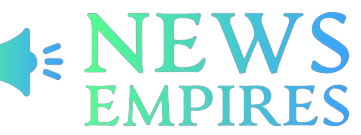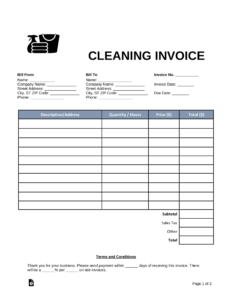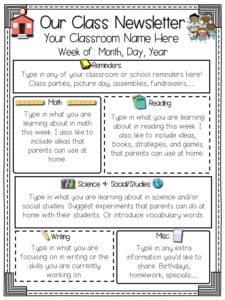Creating a compelling sale proposal is a crucial step in winning new business and increasing sales. A well-structured and persuasive proposal can effectively communicate your value proposition and convince potential clients to choose your products or services over your competitors. In this article, we will provide you with a detailed guide on how to create a sale proposal template that maximizes your chances of closing deals. From understanding the components of a sale proposal to incorporating persuasive techniques, we will cover it all. Let’s dive in!
1. Understanding the Components of a Sale Proposal
Before we delve into the specifics of creating a sale proposal template, it is essential to understand the key components that make up an effective proposal. Here are the essential elements:
- Title: The title should be concise, attention-grabbing, and clearly convey the purpose of the proposal.
- Introduction: Begin with a brief introduction that provides an overview of your company and the purpose of the proposal.
- Client’s Problem: Clearly define the problem or pain point that the client is facing. This helps you demonstrate your understanding of their needs.
- Solution: Present your proposed solution to the client’s problem. Highlight the benefits and advantages of choosing your solution over alternatives.
- Methodology: Outline the step-by-step process you will undertake to implement your solution. This gives the client a clear idea of what to expect.
- Pricing and Packages: Clearly state the pricing structure and different packages you offer. Make sure to highlight the value and return on investment the client can expect.
- Timeline: Provide a timeline for the project, including key milestones and deliverables. This helps the client understand the project’s duration.
- Testimonials and Case Studies: Incorporate testimonials and case studies from satisfied clients to build credibility and trust.
- Call to Action: End the proposal with a clear call to action, such as requesting a meeting, signing a contract, or making a purchase.
2. Crafting the Perfect Sale Proposal Template
Now that we have a clear understanding of the essential components, let’s explore the step-by-step process of creating a compelling sale proposal template:
2.1 Research and Understand Your Client
Before you start crafting your proposal, it is crucial to thoroughly research and understand your client. This includes understanding their industry, pain points, goals, and competitors. The more you know about your client, the better you can tailor your proposal to their specific needs and challenges.
For example, if you are proposing a digital marketing solution to a retail client, you should research their target audience, current marketing strategies, and competitors. This research will help you highlight the unique value you can bring to their business.
2.2 Customize Your Proposal for Each Client
Avoid using a generic, one-size-fits-all proposal template. Instead, customize your proposal for each client based on their specific needs and pain points. Tailor the language, examples, and case studies to resonate with their industry and challenges. This personalization shows the client that you have invested time and effort in understanding their business, increasing your chances of success.
2.3 Use a Professional Design
The visual appearance of your proposal plays a significant role in capturing the client’s attention and making a positive impression. Use a professional design that aligns with your brand identity and conveys professionalism. Incorporate your company logo, colors, and fonts to create a cohesive and visually appealing proposal.
Break the proposal into sections with clear headings and subheadings to improve readability. Use bullet points and numbered lists to present information concisely and make it easy for the client to understand the key points.
2.4 Write Compelling and Persuasive Content
The content of your proposal should be compelling, persuasive, and focused on the client’s needs. Use clear and concise language, avoiding jargon or technical terms that may confuse the client.
Highlight the unique selling points of your solution and how it addresses the client’s pain points. Use persuasive techniques such as storytelling, emotional appeals, and social proof (testimonials, case studies, statistics) to build credibility and trust.
2.5 Showcase Your Expertise
Position yourself as an industry expert by showcasing your expertise, experience, and past successes. Include relevant certifications, awards, and credentials that demonstrate your qualifications. This helps build trust and confidence in your ability to deliver results.
2.6 Include a Clear Call to Action
End your proposal with a clear call to action that guides the client on the next steps. Whether it’s scheduling a meeting, signing a contract, or making a purchase, make it easy for the client to take action. Provide multiple contact options (phone, email, website) to cater to their preferences.
3. Persuasive Techniques to Enhance Your Sale Proposal
Now that we have covered the basics of creating a sale proposal template, let’s explore some persuasive techniques that can further enhance the effectiveness of your proposals:
3.1 Social Proof
Utilize social proof in the form of testimonials, case studies, and success stories from satisfied clients. This helps build trust and credibility, showing potential clients that others have benefited from your products or services.
For example, include a testimonial from a client who experienced significant business growth after implementing your solution. This demonstrates the tangible results your solution can deliver.
3.2 Emotional Appeals
Tap into the emotions of your clients by highlighting the pain points they are experiencing and how your solution can alleviate them. Use evocative language to create an emotional connection with the reader.
For instance, if you are proposing a cybersecurity solution, emphasize the potential risks and consequences of a data breach. Paint a vivid picture of the negative impact it can have on their business, and then present your solution as the safeguard against such threats.
3.3 Storytelling
Humans are naturally drawn to stories. Incorporate storytelling techniques into your proposal to engage the reader and make your message more memorable.
For example, instead of simply stating the features of your product, share a story of how your product transformed a client’s business. Describe the challenges they faced, the solutions you provided, and the positive outcomes they experienced. This narrative approach helps the client visualize the potential benefits of choosing your solution.
3.4 Data and Statistics
Support your claims and arguments with data and statistics to add credibility and make your proposal more convincing. Use industry benchmarks, research findings, or internal data to back up your statements.
For instance, if you are proposing a software solution that improves productivity, provide statistics on the average productivity gains experienced by businesses that have implemented your solution.
3.5 Clear Value Proposition
Clearly articulate the value proposition of your solution and how it differentiates you from your competitors. Highlight the unique benefits and advantages that the client can expect by choosing your product or service.
For example, if you are proposing a project management software, emphasize how it streamlines collaboration, improves efficiency, and reduces costs compared to alternative solutions.
4. Conclusion
In conclusion, a well-crafted sale proposal template is a powerful tool to win new business and increase sales. By understanding the key components of a sale proposal, customizing it for each client, utilizing persuasive techniques, and showcasing your expertise, you can create compelling proposals that stand out from the competition.
Remember to thoroughly research your clients and tailor your proposals to their specific needs and pain points. Use a professional design, persuasive language, and incorporate social proof, emotional appeals, storytelling, data, and a clear value proposition to enhance the effectiveness of your proposals.
By following these guidelines and continuously refining your sale proposal template based on feedback and results, you can significantly improve your chances of closing deals and driving business growth.
5. FAQs After The Conclusion
5.1 What should I do if the client requests changes to the proposal?
If the client requests changes to the proposal, it is important to listen to their feedback and evaluate whether the changes align with their needs and objectives. Consider their suggestions and make revisions accordingly, ensuring that the updated proposal still effectively communicates your value proposition.
5.2 How should I handle objections from potential clients?
Objections from potential clients are common and should be addressed with empathy and understanding. Take the time to listen to their concerns, clarify any misunderstandings, and provide additional information or evidence to alleviate their doubts. Addressing objections in a transparent and informative manner can help build trust and increase the chances of closing the deal.
5.3 Should I include pricing details in the proposal?
Including pricing details in the proposal is crucial as it helps the client understand the investment required for your solution. However, it is advisable to provide pricing in a separate section or appendix, rather than the openingparagraphs. This allows you to first establish the value and benefits of your solution before presenting the pricing details. Clearly explain the different packages or options available and highlight the return on investment the client can expect.
5.4 How long should a sale proposal be?
The length of a sale proposal can vary depending on the complexity of the project or solution being proposed. However, it is generally recommended to keep the proposal concise and focused. Aim to provide all necessary information and address the client’s needs within 6-10 pages. Use clear headings and subheadings to improve readability and make it easy for the client to navigate through the proposal.
5.5 How can I track the effectiveness of my sale proposals?
Tracking the effectiveness of your sale proposals is essential to measure your success and make improvements. One way to do this is by requesting feedback from clients who received your proposals but did not move forward. Understand their reasons for not choosing your solution and identify areas for improvement. Additionally, you can track the conversion rate of your proposals by monitoring how many proposals result in closed deals. This data can help you identify patterns, refine your approach, and optimize your sale proposal template.
Summary
Creating a compelling sale proposal template requires a deep understanding of your client’s needs, effective persuasive techniques, and attention to detail. By incorporating the essential components of a sale proposal, customizing it for each client, and utilizing persuasive techniques such as social proof, emotional appeals, storytelling, data, and a clear value proposition, you can create proposals that stand out and increase your chances of closing deals.
Remember to continuously refine your sale proposal template based on feedback and results, and track the effectiveness of your proposals to make data-driven improvements. With a well-crafted sale proposal template, you can effectively communicate your value proposition and win new business, driving growth and success.





